Better Feedback for Controlled Practice
Better Feedback for Controlled Practice
by John Shaw
Part One: Reflections
The importance and implementation of feedback is a very saturated topic not only in our profession, but in just about any sphere where people have to work together. In the wider world, good feedback is used to judge results and work as a springboard for improvement, and it is no less true for teachers and students. Fortunately for teachers, swathes of material already exist to help teachers deliver skills feedback - but there is far less for when it comes to systems, and for functional language the issue becomes almost desperate.
Since the idea of feedback is so extensive, in this article I will limit myself to a discussion of the kind of feedback we can offer with controlled activities, such as matching tasks and gap fills, and correcting mistakes which many students (and teachers) find less interesting. Coursebooks offer a lot of controlled practice activities, but these often prove demotivating for students to work through. More experienced teachers will likely have a toolkit of approaches to help get them through these tasks; here I will be offering activities that should work for all, regardless of where they are in their careers.
As a newly-qualified teacher, I picked up lots of good ideas when it came to livening up controlled practice, such as getting the students to write their answers on the board, hence initiating a bit a of movement, and in the same vein putting the answers on strips of paper and sticking them to the walls, so students could check their answers themselves. Early on I was also introduced to information gaps where pairs would answer half the questions and have the answers to the other half which their partner had to answer. The first games I used to reward task completion were simple activities such as putting students into pairs or teams and when a student answered a question correctly, they got to take a turn in the game to get a point.
However, as I started to develop as a teacher I noticed limitations. Firstly, the weaker students were often reliant on their partner or teams, which I was able to overcome with proper scaffolding and monitoring. Secondly, I realised that students would lose their initial enthusiasm with a game after a while, and the third thing was that I understood that students often needed to be given the functional language to actually talk together in the pre-feedback to make it truly communicative. At some point I realised that I did not need to just give them the minimum langage to do the task, but I could use this as an opportunity to enrich their language.
The fact that my students’ enthusiasm for a particular game could easily start to wane was really fascinating, and made me wonder what was going on. While preparing teacher workshops I came across ‘The Hawthorne Effect,’ which highlights a study where a factory owner increased the brightness of the lights to see if it affected productivity. The results indicated an increase, but this boon was short-lived - it increased productivity for a while but soon the workers went back to their previous states, almost as if there had never been a change to the lighting in the first place. This meant that if I were to keep students on a high for the whole academic year and beyond, I would either need to keep using lots of different games, or even better, to use games that were easily adaptable. One such game I found is called ‘Guns, Bombs and Hearts (or Angels)’, which I describe in Part Two of this article. This game was a hit, but after a few weeks it had declined in novelty and I decided to make a radical change. I included some double and triple guns, bombs and hearts. It was a completely new game for the students, and it continued to grow from there.. It was also around this time that I realised that such games could be exploited for language production and I started to pre-teach a plethora of phrases like “It’s our turn”, “Wahoo” “Oh no!” “We’d like to take a point from…” “We’ll get revenge” and so on.
This path towards language exploitation would move into the cultural realm when I started to integrate British sports into my feedback - you’ll find examples based on football and cricket later. As well as using these games to encourage the students to work through their controlled practice tasks, they also served to introduce a lot of topic-specific vocabulary, and since the vocabulary added value to the games, the students were motivated to learn it. I will never forget the sight of my adult C1 students diving across the classroom in their work attire to save a precious point for their team using typical language associated with such highly charged moments which probably should not be published. If that was not enough, there was the semester I decided to teach my four C1 teenagers cricket. For clarification this was in a country that thinks this sport is croquet from Alice and Wonderland. I would draw the stumps and bails on the board, explain the rules and scoring system a million times, the walls of the classroom were boundaries and the non-batting students were fielders. There are now four women roaming the world with the knowledge of the rules, equipment, fielding positions and why England almost always loses to Australia, which makes them more adept than ninety-nine percent of Americans in this sphere. I know one of them later attended a university in the UK, so perhaps this knowledge all proved useful!
All of this led up to what I call the ‘Gold Standard’ of feedback games. I had learnt from early on that any game had to be fun, meaningful, not waste too much time, and ideally include movement. I later realised the games had to be adaptable and I had to maximise language production. By this time I was taking the IH CAM course and I was improving my theoretical knowledge, having a greater awareness of the role of student autonomy. The game that emerged even now still has no name, but was developed while teaching an individual student. This boy was 12, had passed the Cambridge A2 Key exam with a Pass A and he was well on the way to achieving this at B1 level too. He was one of those students who had to go to tennis club and Chinese classes among other extracurricular activities and was understandably not too keen on doing reading practice two evenings a week. As usual I included a quick, easy game as part of my arsenal to make the process more palatable for him. The game involved answering a question, then having to knock a plastic cup off a chair with a ball and we kept score. After a while though I had a brainwave and asked him to come up with a rule. He obliged and decided to add more cups; we revised conditionals and he came up with more and more rules every lesson. These included extra points for bouncing the ball off the wall, bonus points for knocking all the cups down, points if one landed face up, or multipliers if we threw with our eyes closed or threw the ball through the legs. If I had been on the ball, forgive the pun, I would have codified the unnamed sport. In truth though, everything was generated from him and my only role was to guide him by providing further language to express these rules.
If you are able to exploit the imaginations of your students they can be the ones creating these fun and memorable games, adapting the rulebooks as they go and surely they are going to be more engaged and likely to use functional language when they have ownership of the game. That is at least how it has worked for me.
Part Two: The Activities
In this section of the article I will walk you through some of the activities I use to make my controlled practice as interactive and positive as possible. Forgive the quality of the photographs - they are here to give you an idea of the activity, not to show off my skills with a camera!
Taboo and Alias
In Taboo, students get a slip of paper with a word on it and need to explain this word to their partner without saying the target word. Alternatively, you could put multiple slips on the table and students could work in threes - one student reads the definition of a word and the other two compete to choose the right word.
Alias is similar, but you are given a card with multiple words on it and one student needs to get their partner to guess as many of the words as possible within the time limit.

Back to the Board:
One student sits in front of the whiteboard and the teacher writes a word on the board. The rest of the class has to work together to explain the word without saying it.
To make this more student-centred, you can line up students face to face with a partner and hold a sign behind the line and the students have to race to get their partners to guess the word before the other pairs do.
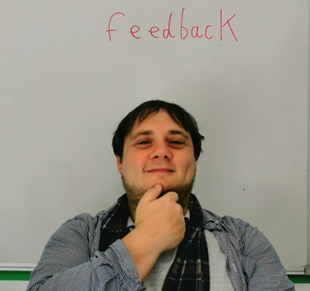
Dart Board Feedback
Draw a board on the board with different points in each section.
When a pair genuinely attempts to answer a question, they get a shot.
Add negative points to add a bit of spice to this game.
Remember to teach functional language: I got ______ points, no you didn’t you got _____ points. Oops I missed, Oh no you missed! We are winning! Well done!
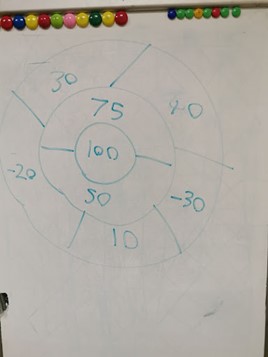
Basketball Feedback:
Use a clean waste paper bin as a basketball net.
Students need to throw a softball, object, or scrunched up piece of paper into the bin when they attempt a genuine answer to a question in feedback.
Mark out two boundaries in the middle of the classroom. If you score 2 points on the first line one point is scored and if you score a point on the second line three points are scored.
Teach functional language such as, Yea got it in! Oh, just missed, oh it was nowhere near! 2-pointer! 3-pointer!
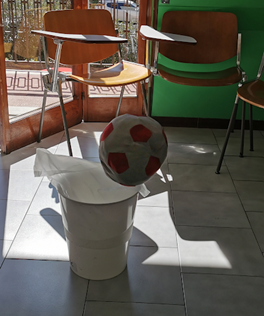
Dodgeball Feedback:
Once all the students have done their pair checks they stand up in the room.
The teacher throws the soft ball softly towards the legs of the students (and models and ICQs this for safety purposes).
The student who gets hit has to answer the question. That student then is the next thrower of the ball and sits down after they hit the next student so that everyone gets a turn.
Functional language includes: I hit you, oh no, you hit me, you missed, you hit ____.
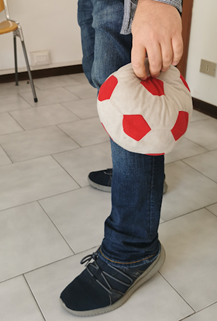
Guns, Bombs and Hearts:
Draw a grid on the board and the corresponding key on a piece of paper for yourself.
A heart gives one life, a bomb negative one life and a gun lets you take a point from another team.
When a pair genuinely attempts to answer a question, they get a turn.
Pre-teach functional language: Wahoo, yay, oh no, darn, I’d like to take points from, We won’t forget this, we’ll get revenge, it’s time for your just deserts!
I also play an alternative, hearts, stars and treasure chests, which give +1, +2 and +3 as younger students can get upset and confused if they lose points for a correct answer.
You can use alternative symbols if you want to avoid the use of weapons for ethical reasons. The possibilities for expansion here are virtually limitless.

Football Feedback:
Split the class into two teams and they check their answers for accuracy.
If a team answers correctly, you move the ball in the direction of the other goal, but if they get it wrong, then the ball moves towards their goals. Once the ball goes into a goal, one point is scored.
Teach functional language such as Goal! Nice pass, getting closer, oh, what a blunder!
This can easily be adapted and actually lots of websites have these types of games on interactive PowerPoints. Since the shift to online teaching, these games have become a lot more popular. I have seen slides of horse racing and a space race used by teachers. You could also use the same idea to take turns playing board games like chess if turns are awarded for attempting and answer rather than accuracy. This provides an opportunity to teach the pieces and the rules of such games.
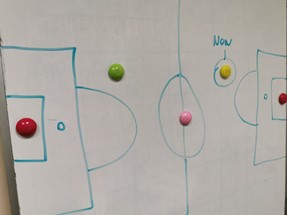
Penalty shootout:
Turn the whiteboard into a goal and prepare a soft ball.
The pair that gets the controlled practice question correct gets to shoot and another team nominates a goalkeeper to stop the shot. A point is awarded if the ball hits the net.
Functional language includes: goal, off the post, it hit the bar, what a save, what a miss!
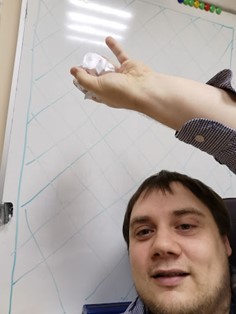
Cricket:
Draw the stumps and bails on the board.
(Learn) and explain the rules and scoring system of cricket and adapt it to your classroom.
You could in theory teach any kind of sport or game with enough imagination. Although even I have my limits and will not be recreating Squid Game no matter how much my students beg for it…
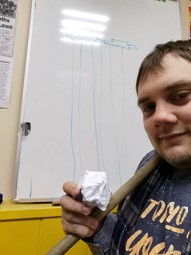
Create your own game:
This is dependent on level as obviously the younger and lower level they are, the more you will need to scaffold. With intermediate level and above you can give common objects such a plastic cup and a ball and let their imaginations run wild, but below this, you would need to provide models of other games and sports and elicit rules, conditionals and anything else that is essential to task creation. Every once in a while encourage your students to rework the rules. Not only does this help develop their reflection skills, it will keep the activity fresh and provide more opportunities to activate language.
Author Biography
 My name is John Shaw and I currently teach at IH British School, Reggio Calabria in the south of Italy. I started teaching 10 years ago at IH in Moscow after completing my CELTA at IH Prague. In Moscow I worked for many years as an ADOS for the school’s camp and some satellite schools and later worked as a DOS at a school which provided extracurricular English at public schools. My immediate goals are to add activities to an open source ‘Book of Games’:
My name is John Shaw and I currently teach at IH British School, Reggio Calabria in the south of Italy. I started teaching 10 years ago at IH in Moscow after completing my CELTA at IH Prague. In Moscow I worked for many years as an ADOS for the school’s camp and some satellite schools and later worked as a DOS at a school which provided extracurricular English at public schools. My immediate goals are to add activities to an open source ‘Book of Games’:
